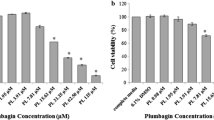Abstract
Purpose. This study characterized the cellular uptake mechanism and hydrolysis of the amino acid ester prodrugs of nucleoside antiviral drugs in the transiently transfected Caco-2 cells overexpressing a human intestinal peptide transporter, hPEPTl (Caco-2/hPEPTl cells).
Methods. Amino acid ester prodrugs of acyclovir and AZT were synthesized and their apical membrane permeability and hydrolysis were evaluated in Caco-2/hPEPTl cells. The cellular uptake mechanism of prodrugs was investigated through the competitive inhibition study in Caco-2/hPEPTl cells.
Results. L-Valyl ester of acyclovir (L-Val-ACV) was approximately ten fold more permeable across the apical membrane than acyclovir and four times more permeable than D-valyl ester of acyclovir (D-Val-ACV). Correspondingly, L-valyl ester of AZT (L- Val-AZT) exhibited three fold higher cellular uptake than AZT. Therefore, amino acid ester prodrugs significantly increased the cellular uptake of the parent drugs and exhibited the D,L-stereoselectivity. Furthermore, prodrugs were rapidly hydrolyzed to the parent drugs by the intracellular hydrolysis, following the apical membrane transport. In the inhibition studies, cephalexin and small dipeptides strongly inhibited the cellular uptake of L-Val-ACV while L-valine had no effect, indicating that the peptide transporter is primarily responsible for the apical membrane transport of L-Val-ACV. In addition, the cellular uptake of L-Val-ACV was five times higher in Caco-2/hPEPT 1 cells than the uptake in the untransfected Caco-2 cells, implying the cellular uptake of L-Val-ACV was related to the enhancement of the peptide transport activity in Caco-2/hPEPTl cells.
Conclusions. Caco-2/hPEPTl system is an efficient in vitro model for the uptake study of peptidyl derivatives. Amino acid ester prodrugs significantly improved the cellular uptake of the parent drugs via peptide transport mechanism and were rapidly converted to the active parent drugs by the intracellular hydrolysis.
Similar content being viewed by others
REFERENCES
S. Weller, M. R. Blum, M. Doucette, T. Burnette, D. M. Cederberg, P. de Miranda, and M. L. Smiley. Pharmacokinetics of the acyclovir prodrug valaciclovir after escalating single and multiple dose administration to normal volunteers. Clin. Pharmacol. Ther. 54:595–605 (1993).
R. H. Lupia, N. Ferencz, J. L. Lertora, S. K. Aggarwal, W. J. George, and K. C. Agrawal. Comparative Pharmacokinetics of Two Prodrugs of Zidovudine in Rabbits: Enhanced Levels of Zidovudine in Brain Tissue. Antimicrob. Agents Chemother. 37:818–829 (1993).
L. M. Beauchamp, G. F. Orr, P. de Miranda, T. Burnette, and T. A. Krenitsky. Amino acid ester prodrugs of acyclovir. Antiviral. Chem. Chemother. 3:157–164 (1992).
H-k. Han and G. L. Amidon. Intestinal absorption of valacyclovir, a novel prodrug of acyclovir, in the rat jejunum. Pharm. Res. 13:S-246 (1996).
I. J. Hidalgo, T. J. Raub, and R. T. Borchardt. Characterization of the human colon carcinoma cell line(Caco-2) as a model system for intestinal epithelial permeability. Gastroenterology 96:736–749 (1989).
I. Tamai, H. Takanaga, H. Maeda, Y. Sai, T. Ogihara, H. Higashida, and A. Tsuji. Participation of a proton-cotransporter, MCT1, in the intestinal transport of monocarboxylic acids. Biochem. Biophys. Res. Commun. 214:482–489 (1995).
J. Mesonero, M. Matosin, D. Cambier, M. J. Rodriguez-Yoldi, and E. Brot-Laroche. Sugar-dependent expression of the fructose transporter GLUT5 in Caco-2 cells. Biochem. J. 312:757–762 (1995).
M. Hu. Comparison of uptake characteristics of thymidine and zidovudine in a human intestinal epithelial model system. J. Pharm. Sci. 82:829–833 (1993).
S. Chong, S. A. Dando, K. M. Soucek, and R. A. Morrison. In vitro permeability through Caco-2 cells is not quantitatively predictive of in vivo absorption for peptide-like drugs absorbed via the dipeptide transporter system. Pharm. Res. 13:120–123 (1996).
W. Liu, S. Ramamoorthy, Y. J. Fei, N. E. Ganapathy, M. A. Hediger, V. Ganapathy, and F. H. Leibach. Molecular cloning of PEPT2, a new member of the H+/peptide cotransporter family from human kidney. Biochim. Biophys. Acta. 1235:461–466 (1995).
R. Liang, Y. J. Fei, P. D. Prasad, S. Ramamoorthy, H. Han, T. L. Yang-Feng, M. A. Hediger, V. Ganapathy, and F. H. Leibach. Human intestinal H+/peptide cotransporter: cloning, functional expression and chromosomal localization. J. Biol. Chem. 270:6456–6463 (1995).
K. Y. Covitz, G. L. Amidon, and W. Sadée. Human dipeptide transporter, hPEPT1, stably transfected into chinese hamster ovary cells. Pharm. Res. 13:1631–1634 (1996).
M. C-P. Hsu, J. M. Hilfinger, E. Walter, H. P. Merkle, B. J. Roessler, and G. L. Amidon. Overexpression of Human Intestinal Oligopeptide Transporter in Mammalian Cells via Adenoviral Transduction. (in press).
O. H. Lowry, N. J. Rosebrough, A. L. Farr, and R. J. Randall. Protein measurement with the Folin phenol reagent. J. Biol. Chem. 193:265–275 (1951).
M. Hu, P. Subramanian, H. I. Mosberg, and G. L. Amidon. Use of the peptide carrier system to improve the intestinal absorption of L-α-methyldopa: carrier kinetics, intestinal permeabilities, and in vitro hydrolysis of dipeptidyl derivatives of L-α-methyldopa. Pharm. Res. 6:66–70 (1989).
K. C. Meadows and J. B. Dressman. Mechanism of acyclovir uptake in rat jejunum. Pharm. Res. 7:299–303 (1990).
Author information
Authors and Affiliations
Rights and permissions
About this article
Cite this article
Han, Hk., Oh, DM. & Amidon, G.L. Cellular Uptake Mechanism of Amino Acid Ester Prodrugs in Caco-2/hPEPT1 Cells Overexpressing a Human Peptide Transporter. Pharm Res 15, 1382–1386 (1998). https://doi.org/10.1023/A:1011945420235
Issue Date:
DOI: https://doi.org/10.1023/A:1011945420235




